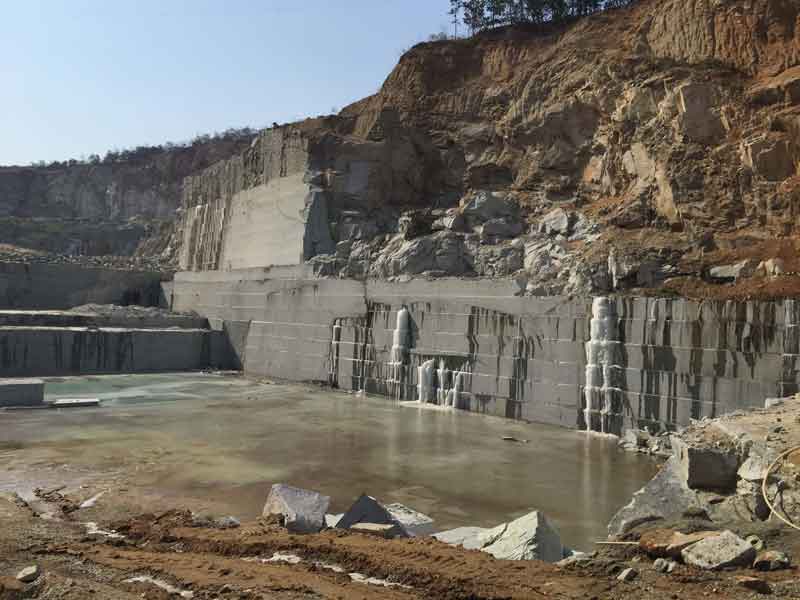Travelling Through Granite Quarries in South Africa: A Visual Odyssey
Unveiling the Mysteries of Granite Quarrying: Where Toughness and Style Meet
The world of granite quarrying is a realm where the raw strength of nature converges with human artistry to produce frameworks that stand the test of time with an air of elegance. From the depths of quarries to the careful sprucing up in workshops, the process of transforming granite right into architectural wonders is a complex dancing of tradition and advancement. As we peer right into the depths of this ancient craft, we start to uncover the covert ins and outs that form the extremely significance of our developed atmosphere.
The Beginnings of Granite Quarrying
In the annals of architectural background, the origins of granite quarrying are shrouded in a tapestry of ancient craftsmanship and geological wonders. Dating back to old Egypt and Mesopotamia, the extraction of granite from quarries noted the beginning of a journey that would at some point lead to the creation of a few of the world's most renowned structures.
Granite quarrying's roots can be traced to the knowledgeable artisans that recognized the rock's durability and visual allure. Via a combination of primitive devices and sheer determination, these very early quarry workers uncovered granite blocks that would become the building blocks of worlds.
As worlds progressed, so did the methods of quarrying granite. The Romans, renowned for their engineering expertise, developed innovative methods for drawing out granite to create monuments, holy places, and roadways that stood the examination of time.
The legacy of these old quarrying practices proceeds to form modern-day architecture, with granite staying an icon of strength and style in building and construction jobs around the globe. (granite quarries in south africa)
Devices of the Quarrying Profession
The development of granite quarrying techniques from old human beings to modern times highlights the crucial function played by the devices of the quarrying trade in forming the market's techniques. In old times, quarrying tools were simple, usually containing knives, hammers, and wedges made from materials like bronze or iron. These devices called for significant manpower and time to extract granite obstructs from quarries.

Furthermore, the introduction of pneumatically-driven tools and high-powered equipment has considerably lowered the physical labor required in quarrying procedures, enhancing employee safety and security and productivity. As the quarrying sector continues to introduce, the devices of the trade stay at the center of driving progression and forming the future of granite extraction.
Extracting Blocks of Granite
Using precision equipment and advanced methods, the extraction of granite obstructs from quarries has actually ended up being an innovative process in the modern quarrying sector. The first step involves determining the place and size of the granite deposit to figure out the most effective extraction technique. Once an ideal website is selected, the extraction process begins with the drilling of holes for the positioning of nitroglycerins. Controlled blowing up techniques are then utilized to damage apart the granite right into convenient areas.

Sprucing Up and Finishing Techniques
To achieve a remarkable surface on granite blocks, competent artisans employ a collection of thorough sprucing up and ending up check these guys out methods. After the initial extraction and shaping processes, the granite obstructs undergo a complete sprucing up phase to improve their natural charm and durability. One typical approach used in polishing granite is ruby abrasion, where industrial diamonds are used to grind and polish the rock to a smooth finish. This process not only creates a lustrous surface yet additionally ensures uniformity in shade and appearance throughout the granite block.
In enhancement to polishing, completing methods are used to more fine-tune the granite's look. These techniques might include flaming, refining, or brushing, each offering special structures and coatings to suit granite quarries in south africa various aesthetic choices. Flaming, for example, entails subjecting the granite surface to high temperature levels to produce a harsh, textured finish, ideal for outdoor applications where slip-resistance is necessary. Developing, on the other hand, provides a matte surface that is smooth to the touch, excellent for interior countertops and flooring. By carefully choosing and applying these brightening and ending up strategies, craftsmens can change raw granite obstructs right into splendid pieces that showcase both toughness and beauty.

Environmental Impact and Sustainability
With the growing focus on environmental consciousness in the industry, granite quarrying techniques are progressively looked at for their influence on natural deposits and long-lasting sustainability. Quarrying for granite can have significant environmental ramifications. The removal procedure frequently involves using hefty equipment, explosives, and big amounts of water, bring about habitat damage, soil disintegration, and water pollution. In addition, the transport of granite from quarries to processing facilities generates carbon emissions, even more contributing to ecological deterioration. granite quarries in south africa.
To alleviate these impacts and make sure sustainability in granite quarrying, market stakeholders are adopting different actions. Executing innovative modern technologies to minimize power consumption and water usage, reclaiming quarried land for environmental remediation, and promoting responsible sourcing methods are some approaches being utilized. Certifications such as the Woodland Stewardship Council (FSC) and the Management in Power and Environmental Style (LEED) help customers recognize environmentally friendly granite products.
Final Thought
To conclude, granite quarrying is a process that needs specialized tools and techniques to remove blocks of granite and polish them to a high level of surface. While the environmental impact of quarrying can be substantial, initiatives are being made to enhance sustainability practices in the hop over to here sector. Generally, granite quarrying is a fragile equilibrium between using the stamina and sophistication of this natural rock while decreasing its effect on the setting.